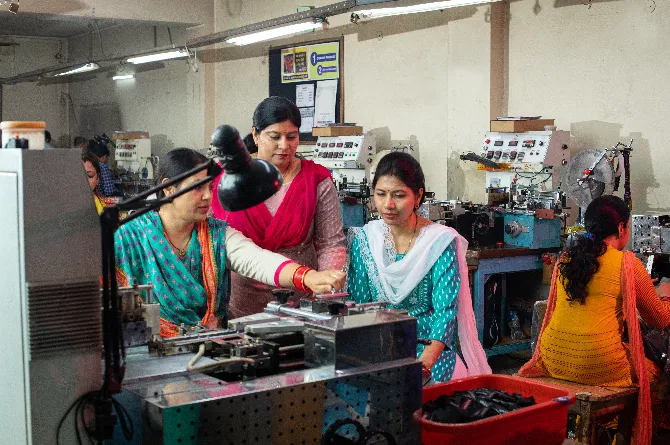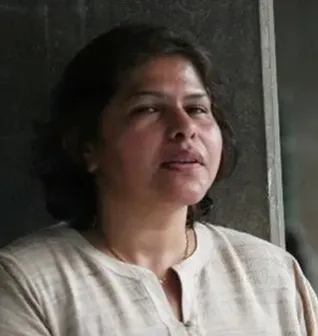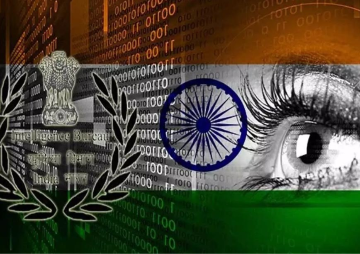
Gender norms and biases and the disproportionate responsibility of household chores, raising children, and elder care, significantly impact women's participation in the workforce. These unpaid caregiving duties greatly limit their time and opportunities for formal employment, leading to a lower rate of female labour force participation. They have a far-reaching socioeconomic impact, reinforcing harmful gender biases and limiting the potential of half the population. India's female workforce participation was 24 percent in 2022. This low rate, which undermines the country’s economic development and social welfare, calls for an urgent review of India's policies and schemes related to women’s empowerment.
They have a far-reaching socioeconomic impact, reinforcing harmful gender biases and limiting the potential of half the population.
India’s Ministry of Women and Child Development’s Mission Shakti, with two sub-schemes, ‘Samarthya’ and ‘Sambal’, is designed to ensure women's safety, security, and empowerment. While Samarthya focuses on women’s empowerment, Sambal addresses gender-based violence, rehabilitation, and accommodation for working women. The National Creche Scheme and the Pradhan Mantri Matru Vandana Yojana, previously under the umbrella Integrated Child Development Scheme, are also included in Samarthya. Additionally, Mission Shakti’s National Hub for Empowerment of Women maintains a flexi-fund to address unforeseen needs related to its sub-schemes and provide essential gap funding to ensure the safety, wellbeing, and progress of women and girls in a flexible, responsive way, mainly when other funding sources are insufficient. India’s commitment to the United Nations Sustainable Development Goals also reinforces these initiatives. However, the World Economic Forum’s Global Gender Gap Report 2023 ranks India 142 out of 146 countries with regards to economic participation of and opportunity for women, indicating that there still is much to be achieved on the journey to attain gender parity. Although the government has developed overarching policies and schemes to promote women's workforce participation, societal and systemic biases along with logistical hurdles make their effective implementation challenging. These hurdles range from deeply ingrained cultural biases and a lack of awareness and accessibility to these programmes, to resource constraints. It is, therefore, necessary to understand these intersecting issues and craft appropriate policies and interventions.
The National Creche Scheme and the Pradhan Mantri Matru Vandana Yojana, previously under the umbrella Integrated Child Development Scheme, are also included in Samarthya.
The COVID-19 pandemic spotlighted the vulnerability of women’s employment in times of crisis. A study indicated significant gender disparity in job loss during the 2020 lockdown. While only 7 percent of men were out of work, 47 percent of women lost their jobs, with most not resuming employment by the year's end. The situation was even more dire in the informal sector, where 80 percent of the workers lost their jobs during the lockdown months. Education is another crucial consideration for increasing women’s workforce participation. Data indicates that 71.5 percent of women, compared to 84.4 percent of men in the 15-49-year age group, are literate. Despite improvement over previous years, the issues of lower literacy for women and their access to education can be tied to other prevailing issues. While deep-rooted gender biases and unpaid caregiving work are obstacles to women and girls’ access to education and livelihood, poor water and sanitation facilities further prevent women and girls from accessing these opportunities. Girls typically miss around six days of school each month, and 23 percent drop out upon reaching puberty due to inadequate sanitation facilities in educational institutions. Consequently, their potential and future workforce contributions are severely diminished. Including women in STEM (Science, Technology, Engineering and Mathematics)-related professions is critical to a nation's economic and societal progress. Notably, nearly half of India's STEM graduates are women. However, India’s proportion of women engaged in science and technology-related professions is a paltry 14 percent, a figure vastly inconsistent with their representation in the corresponding educational categories. It is, therefore, critical to understand and address the barriers to women’s entry at both stages—education and workforce.
While only 7 percent of men were out of work, 47 percent of women lost their jobs, with most not resuming employment by the year's end.
The economic argument for fostering women's participation is undeniable, as India’s GDP could potentially increase by 27 percent, equating to US$770 billion, if India can increase its female workforce participation to the same level as men. Immediate action is needed to confront these challenges, including capacity building, skill development, providing access to credit for women-led businesses, improving working conditions, and advocating for legal and social reforms. Stakeholders, including the government, philanthropies, civil society, and the private sector, must streamline their efforts and advance sustainable solutions. Infrastructure and public service delivery improvements to support education and livelihoods can go a long way in removing barriers to women’s participation in the workforce. According to a survey, nearly 50 percent of previously employed women said that they had to give up paid work due to childcare responsibilities. As childcare responsibilities, in particular, are relegated to women, it is necessary to support them with quality and affordable childcare facilities at their workplaces. Similarly, sanitation infrastructure can prevent women from dropping out of educational and income-generating roles.
Stakeholders such as philanthropies, civil society organisations, and the private sector can further contribute and strengthen the rights and protections accorded to women.
As a significant influencer, the government's role spans across immediate and long-term dimensions. The Indian government already has policy reforms protecting women's rights in the workplace, ensuring equal pay, and enforcing laws against harassment of women. Stakeholders such as philanthropies, civil society organisations, and the private sector can further contribute and strengthen the rights and protections accorded to women. The private sector can drive workplace policies such as paid paternity leaves, flexible timings, paid commutes to work, and provision of childcare facilities to encourage and maintain the participation of women at work. Further, through gender-affirmative hiring policies like enabling women to join work after a gap and extending maternity benefits, private organisations can help encourage women to enter the workforce. With the help of civil society organisations, workplaces can also institute capacity-building and upskilling programmes for women to remain competitive and job-ready even if they cannot access formal education systems. Through philanthropic support, women, especially at the grassroots level, can access microfinancing and loans, which are essential for initiating and scaling small businesses. Simultaneously, philanthropic funding can contribute to long-term strategies by investing in social initiatives that focus on skill development and economic empowerment for women.
The potential benefits of women's economic empowerment are enormous and transformative, both for women and society.
Women-led organisations can provide immediate relief by offering peer-to-peer support, mentorship, and networking opportunities. They serve as a platform for sharing knowledge and resources, strengthening women's capacity to succeed in the workforce. Over the long term, these organisations can lead and support campaigns for women's rights, collaborate with other stakeholders to implement effective strategies and promote the representation of women in leadership roles across sectors. The journey to gender equality in India's workforce is long and challenging. Yet, the potential benefits of women's economic empowerment are enormous and transformative, both for women and society. Our collective responsibility is to ensure that the women workforce in India gets their due.
Naghma Mulla is the Chief Executive Officer at EdelGive Foundation and a member of the Foundation's Board of Directors.
The views expressed above belong to the author(s). ORF research and analyses now available on Telegram! Click here to access our curated content — blogs, longforms and interviews.




 PREV
PREV


